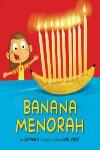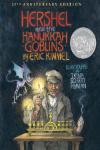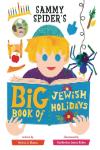Commemoration Book Chelm by M Bakalczuk

Buy this book at Amazon
Cover Art: Rachel Kolokoff Hopper
Chelm, at the outbreak of World War II had a Jewish population of around 18 thousand. Only a remnant of a few hundred Chelmer Jews remain, escaping the Nazi sword in the last days before Hitler’s occupation of the town. Very few Jews saved themselves from the Chelmer Ghetto.
Between the years 1795 and 1807, Chelm belonged to Austria. Since then colonists of Austrian-German origin lived in Chelm and surrounding villages until the recent time, and during the latest German occupation they helped the Hitler hordes to exterminate the Jews.
From 1807 till 1812 Chelm belonged to the Warsaw Grand Duchy; from 1812 till 1915 Chelm was under Russian authority. To all these political circumstances the Jewish population in Chelm had to make adjustments and had to endure many persecutions.
The town lived through a very difficult time when World War I broke out. Chelm was shelled by the Germans and the Russian Army.
Life under the first German occupation was hard and bitter. Bread was made from a mixture of pulp and flour and distributed on ration cards. The population was starving and the mortality was growing from day to day. Epidemics broke out. The Jewish community decided to conduct a wedding at the cemetery, believing that this deed would stop the epidemic. This was actually carried out: An old maid and a widower were found and the wedding took place on the grounds of the cemetery. After that, the plague did indeed diminish and the Jews interpreted the change as having been helped by the superstitious ritual.
The Germans introduced forced labor. Working conditions were terrible and punishment for every trivial thing was very severe.
In 1916 the Austrians took over the town and in many respects the situation became easier. In the Austrian garrison there were Jewish officers who showed a great interest in the Jewish population. In particular, much was done for the Chelmer Jews by: Major Kalrnis (he was city mayor), Dr. Fensterblau (vice mayor), and Dr. Kanfer. In the years 1916-1918 help arrived from the Jews in America. It should be noted, however, that during the difficult occupation years, active social help and activities were conducted, especially under the Austrian authorities. Workers Cooperatives, important institutions, cultural establishments, and children’s homes were opened.
The Jewish working masses in Chelm were then the most dominant and active social force in Jewish life.
With the emergence of the independent Polish Republic, the economic and the cultural-social life changed a great deal.
Year first published: 2021

















